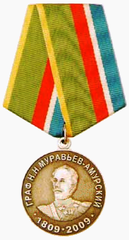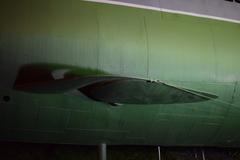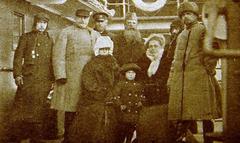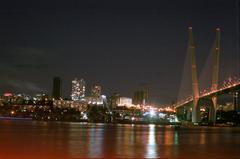
Visiting the Former Oriental Institute Vladivostok: Hours, Tickets & Travel Tips
Date: 04/07/2025
Introduction
The Former Oriental Institute in Vladivostok stands as a remarkable symbol of Russia’s historic and ongoing engagement with East Asia. Founded in 1899 by decree of Tsar Nicholas II, it was the first classical higher education institution in Eastern Siberia and the Russian Far East dedicated to fostering expertise in the languages, histories, and political systems of neighboring Asian countries. The Institute’s blend of Far Eastern Classicism, Empire Revival, and Neo-Renaissance architectural styles, adorned with Asian motifs, reflects Vladivostok’s cosmopolitan aspirations at the dawn of the 20th century. Today, this landmark remains a testament to the city’s identity as a bridge between Russia and Asia. This comprehensive guide covers the Institute’s history, architectural highlights, visiting information, and travel tips to help you plan your exploration of one of Vladivostok’s most significant historical sites. For detailed context and the latest updates, see official sources such as the Far Eastern Federal University, Vladivostok Travel, and How to Russia.
Table of Contents
- Introduction
- Historical Background
- Architectural Significance
- Visitor Information
- Cultural and Academic Legacy
- Preservation and Current Use
- FAQ
- Conclusion
- References
Historical Background
Foundation and Imperial Era
Established in 1899 by Tsar Nicholas II, the Oriental Institute was conceived to meet Russia’s strategic and economic needs in the Far East, particularly as relations with China, Japan, Korea, and Mongolia became increasingly significant. The Institute quickly distinguished itself for its innovative curriculum, which focused on practical training in contemporary Asian languages and political systems. Under the leadership of Professor Alexei Pozdneev, a noted Mongolist, the Institute set a precedent for rigorous, practice-oriented education (Far Eastern Federal University, SHS Web of Conferences).
The Institute’s graduates played pivotal roles in diplomacy, trade, and administration, shaping regional development and international relations throughout the early 20th century (How to Russia).
Architectural Significance
The Former Oriental Institute is a prime example of late 19th and early 20th-century Russian academic architecture. Its façade features ornate brickwork, arched windows, and decorative cornices, harmoniously blending Russian neoclassicism with Asian-inspired motifs. The building was designed to reflect the Institute’s mission as a bridge between Russian and East Asian cultures (rbth.com). Inside, original features include spacious lecture halls, a grand library, and intricate woodwork, creating an atmosphere conducive to scholarly pursuit (explorecity.life).
Visitor Information
Visiting Hours
- Exterior Viewing: The building can be admired from the outside daily from dawn until dusk.
- Interior Access: The Institute is not a full-time museum. Interior access is available during special events, exhibitions, or guided tours. For current schedules, check the Far Eastern Federal University or Vladivostok Travel portals.
Tickets and Admission
- Exterior Viewing: Free, no tickets required.
- Events and Tours: Entry is generally free during public exhibitions. Guided tours, when available, may require advance booking and a small fee (Restgeo Attractions).
Accessibility
- The building’s exterior is accessible and the surrounding area is generally wheelchair-friendly.
- Interior accessibility is limited due to the historic design; inquire in advance if you require assistance.
Guided Tours
- Local operators and some university programs offer guided walks that include the Former Oriental Institute as part of Vladivostok’s historic center tours. Booking in advance is recommended, especially during peak travel seasons.
Directions
- Public Transport: Located centrally, near major landmarks such as Central Square and Svetlanskaya Street, and easily reachable by bus, taxi, or on foot.
- Nearby Landmarks: A short walk from attractions like the Arseniev Regional Museum, Pushkin Theater, and the waterfront promenade.
Nearby Attractions
- Arseniev Regional Museum: Explore the region’s natural and cultural history.
- Vladivostok Fortress: Delve into the city’s military past.
- Central Square & Millionka District: Enjoy the vibrant city atmosphere and diverse local culture.
- Seaside State Art Gallery, Gorky Drama Theater, City Embankments: All within easy reach for a day of cultural exploration (Restgeo Attractions).
Photography Tips
- The Institute’s ornate façade is best photographed during golden hour (early morning or late afternoon).
- Use alt tags such as “Former Oriental Institute Vladivostok facade” for web accessibility and SEO.
- Interior photography may be restricted during certain events; confirm permissions in advance.
Cultural and Academic Legacy
The Oriental Institute set a national precedent for practice-oriented Asian studies, attracting leading scholars and serving as a hub for international academic exchange. Despite changes during the Soviet era, its traditions were carried forward by the Far Eastern State University, and today by the Far Eastern Federal University (FEFU), which maintains active programs in Asian languages and international relations (FEFU History, FEFU Institute of Oriental Studies).
The Institute’s cross-cultural spirit is reflected in Vladivostok’s role as a host city for international academic conferences, cultural festivals, and vibrant exchange programs.
Preservation and Current Use
The Former Oriental Institute is a protected cultural monument, with ongoing restoration projects aimed at preserving its unique architectural and historical features. The building occasionally hosts cultural events, exhibitions, and academic presentations, allowing visitors to experience its rich legacy firsthand. Preservation efforts are part of a broader movement to celebrate Vladivostok’s architectural heritage (vladivostok.travel).
FAQ
Q: What are the visiting hours for the Former Oriental Institute?
A: The building’s exterior is viewable daily; interior access is available only during special events or tours. Check official sources for current schedules.
Q: Is there an entrance fee?
A: No fee is required for exterior viewing. Special events and guided tours may have a small fee.
Q: Are guided tours available?
A: Yes, local tour operators and university programs occasionally offer guided tours. Advance booking is recommended.
Q: Is the site wheelchair accessible?
A: The exterior is generally accessible; interior access may be limited due to historic preservation.
Q: Can I take photographs?
A: Exterior photography is permitted and encouraged. Ask about restrictions for interior events.
Conclusion
The Former Oriental Institute exemplifies Vladivostok’s historical role as Russia’s window to the East and continues to inspire as an enduring symbol of cross-cultural dialogue and academic achievement. While its primary academic functions now reside at the modern FEFU campus, the historic building remains a must-see for visitors interested in architecture, history, and the city’s multicultural heritage. For the latest information on visiting hours, events, and tours, consult the Far Eastern Federal University and Vladivostok tourism portal.
Plan your visit today, and enrich your experience by downloading the Audiala app for guides and audio tours. Explore more of Vladivostok’s fascinating historical sites and immerse yourself in the city’s vibrant cultural scene.
References
- Visiting the Former Oriental Institute in Vladivostok: History, Architecture, and Visitor Information, 2023, (Far Eastern Federal University)
- Visiting the Former Oriental Institute Vladivostok: Hours, Tickets & Historical Insights, 2023, (How to Russia)
- Visiting the Former Oriental Institute in Vladivostok: History, Hours, and Nearby Attractions, 2023, (Vladivostok Travel)
- Former Oriental Institute Vladivostok: Visiting Hours, Tickets & Historical Site Guide, 2023, (Restgeo Attractions)




